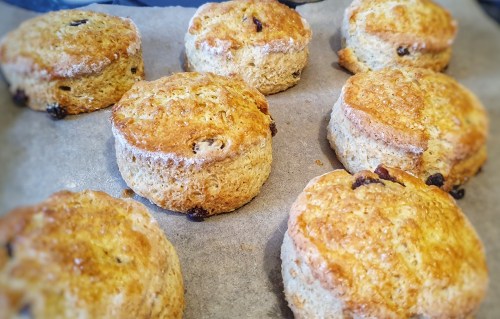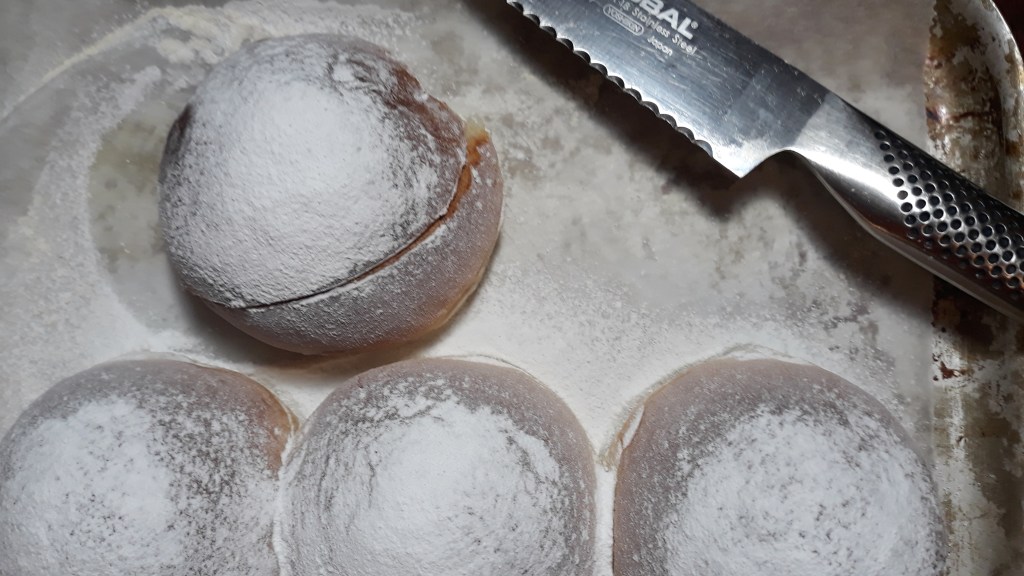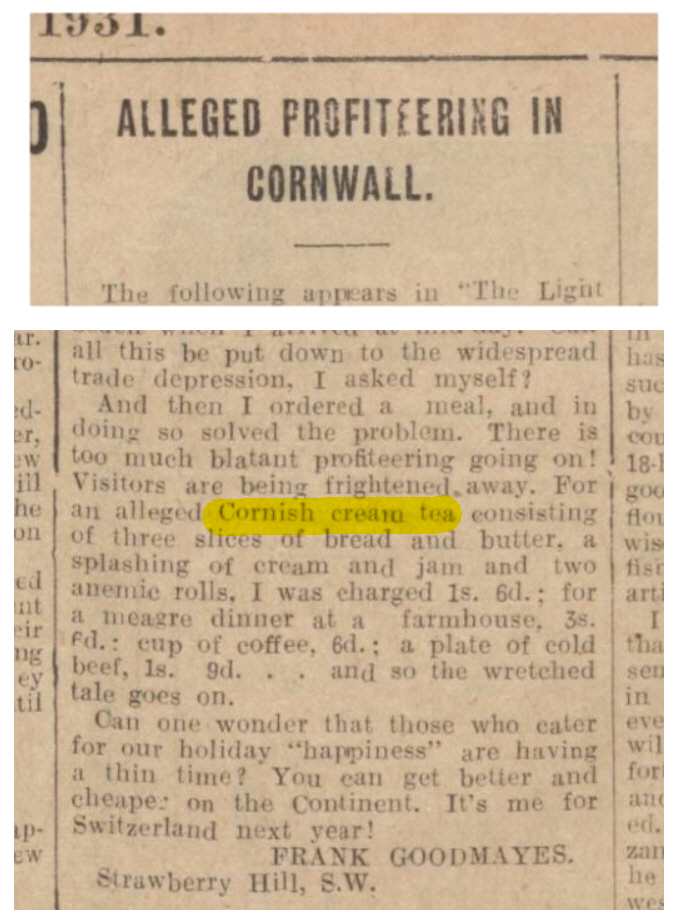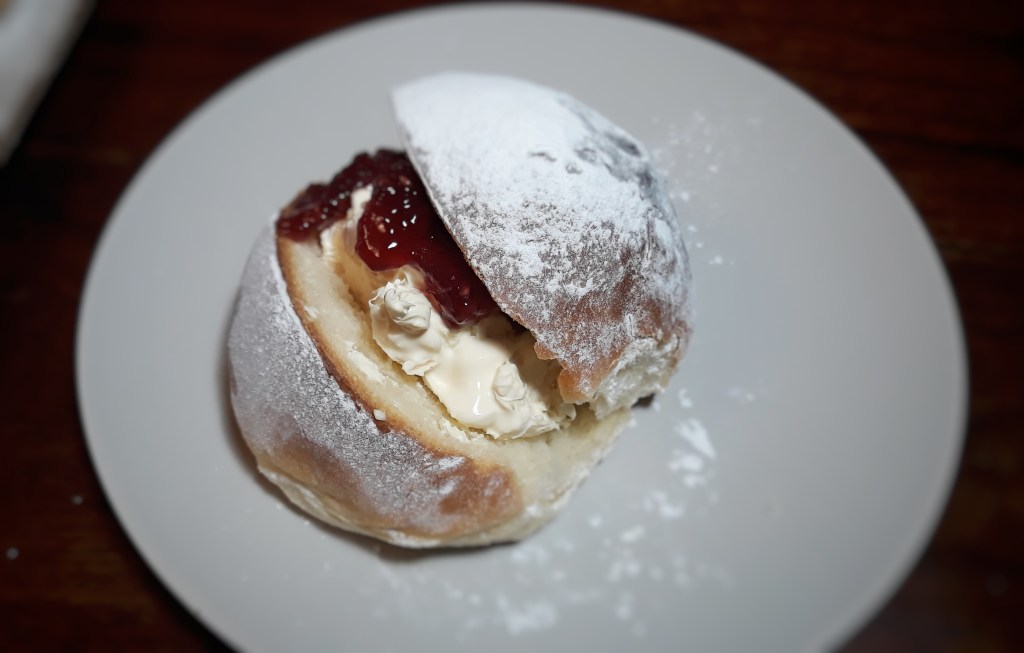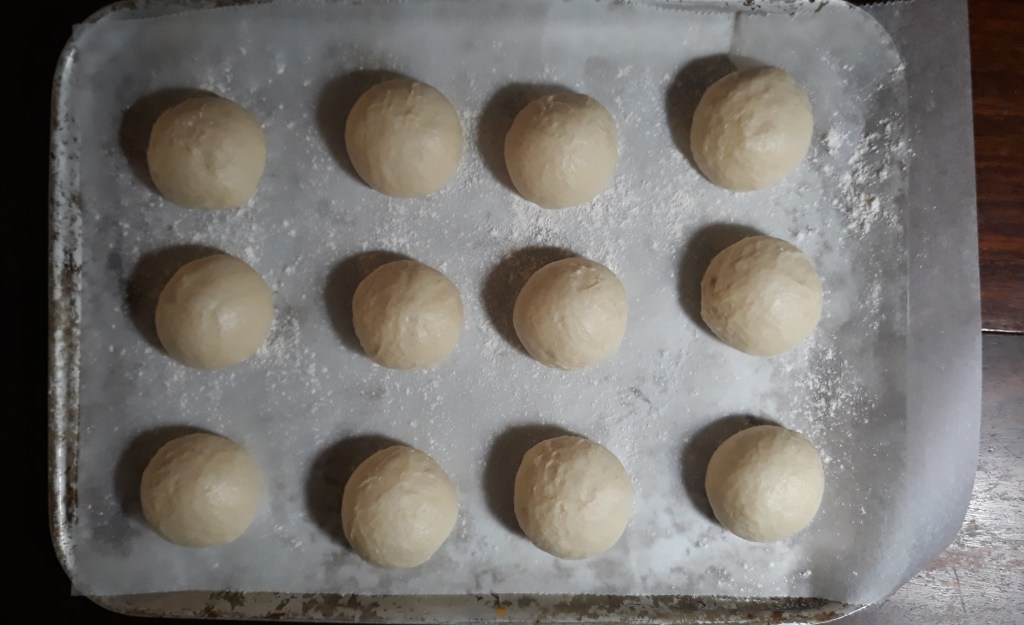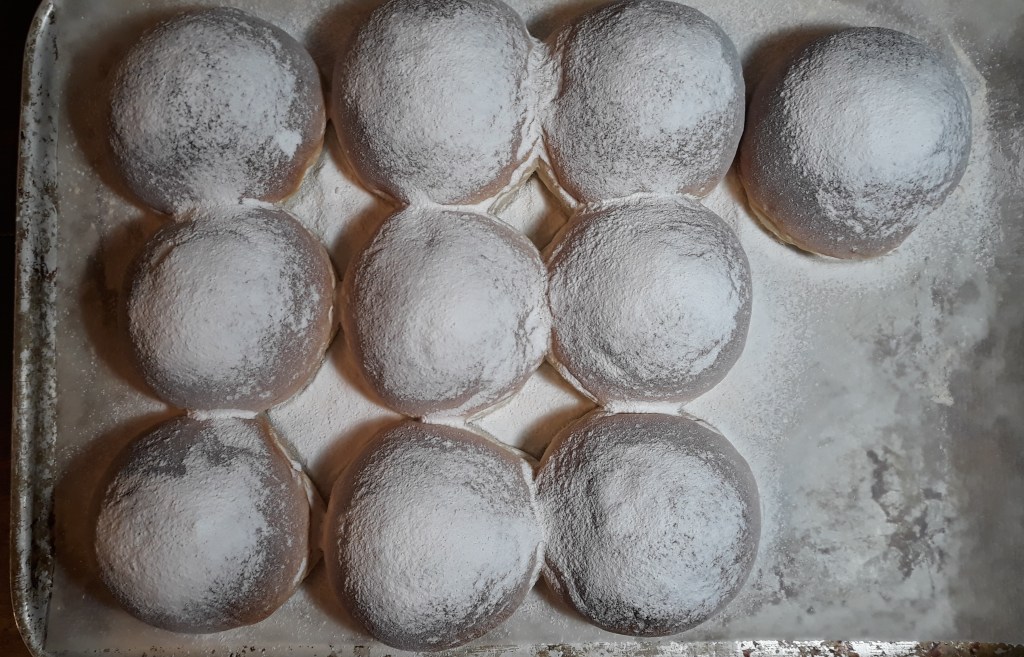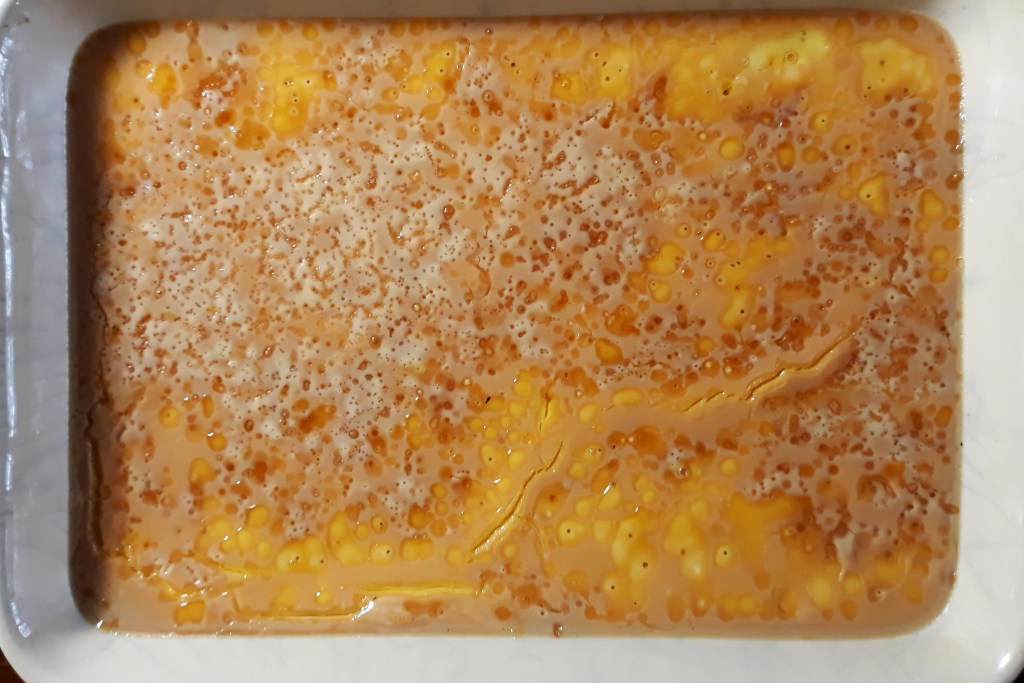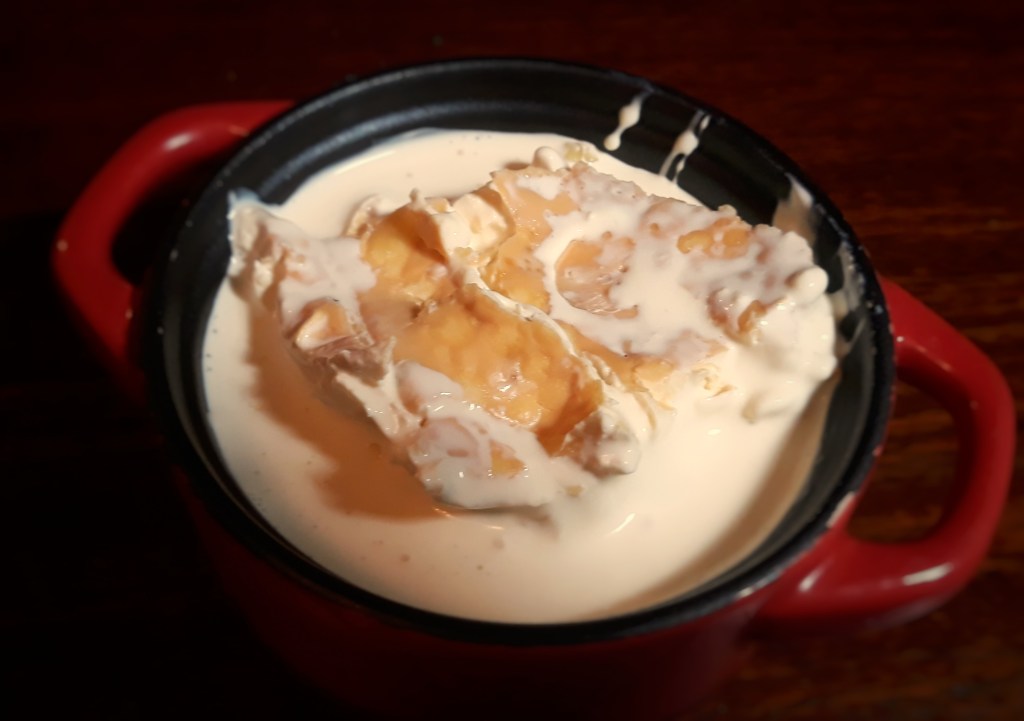You know what it’s like; you go to the home baking aisle of the supermarket and pick up a bag of flour, thinking ‘I’m sure I’m running low’, buy a bag, only to find there is, in fact, a large bag sitting, unopened, in the pantry. Unsure what to do with them, I asked social media whether I should make some scones, saffron buns or lardy cake with it (three recipes I have been meaning to post for years now). The answer came in: 3-way tie. I shall endeavour to do all three for you over the next month or so.
Up first, then, are scones, the must-have for a modern Cornish or Devonshire cream tea. I have written about cream teas both on the blog and in my book Knead to Know, the excerpt of which you can find on my YouTube Channel.
This is the recipe I used when I had both my restaurant and artisan market stall, so it is very tried-and-tested. I have provided some variations for you beneath the method: cranberry and orange, cheese, and walnut and Stilton. When the restaurant was open, we served a savoury cream tea using a cheese scone, swapped clotted cream for cream cheese and exchanged the jam for curried beetroot chutney or onion marmalade.
Classic recipes – especially Scottish and Irish ones – use buttermilk instead of plain milk. As buttermilk is increasingly difficult to get hold of these days, I’ve used milk, but you can swap the two. If you do, use 15 g bicarbonate of soda instead of 25 g baking powder. One final thing: I use strong white flour instead of plain to give the scones a boost in the oven, again, not traditional; in fact, it was a trick picked up from Paul Hollywood in his book 100 Great Breads. This doesn’t mean you can knead the dough roughly as though it is for bread; you still have to use a light touch with mixing, rolling and cutting out. Hopefully, my method will help you achieve great results.
I’ll follow soon with a post on the history of scones.
If you like the blogs and podcast I produce and would to start a £3 monthly subscription, or would like to treat me to virtual coffee or pint: follow this link for more information. Thank you.
Basic Scones
A note on measuring liquids: 1 ml of milk weighs 1 g, so it’s easier – and much more accurate – to weigh it on scales rather than reading the graduations on the side of the measuring jug.
Makes 12 to 15 scones.
500 g strong white flour, plus extra for dusting
30g baking powder
½ tsp salt
75g butter
75g caster sugar
80g quartered glacé cherries, raisins or currants (optional)
200 ml/g whole milk
2 medium eggs
Egg wash: 1 egg or egg yolk beaten with ½ tsp salt
Granulated or Demerara sugar for sprinkling
Preheat your oven to 200°C.
In a bowl, mix flour, baking powder and salt and rub in the butter – you can use the flat beater attachment on your mixer with this, or good old fingertips. Stir in the sugar and fruit (if using).
Beat the eggs with the milk, and steadily mix the liquids into the dry ingredients. If using a mixer, keep it at a slow speed. Make sure all the flour is incorporated, bring the dough together and give it a brief knead on a floured worktop until the dough is smooth.
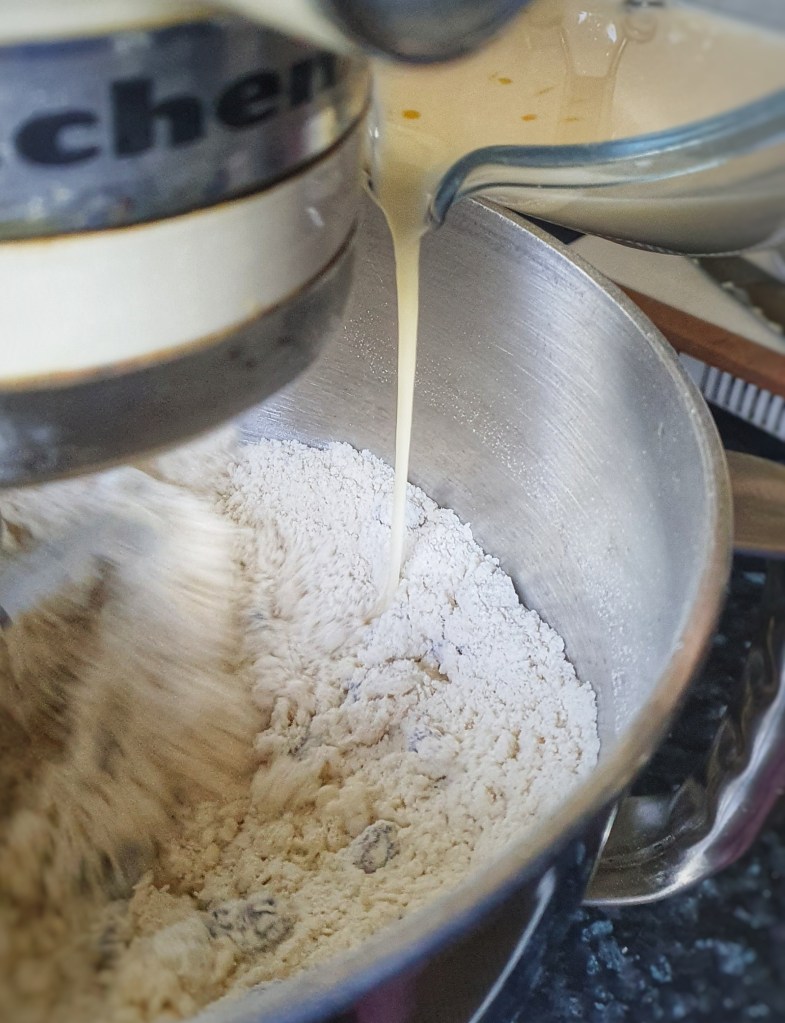
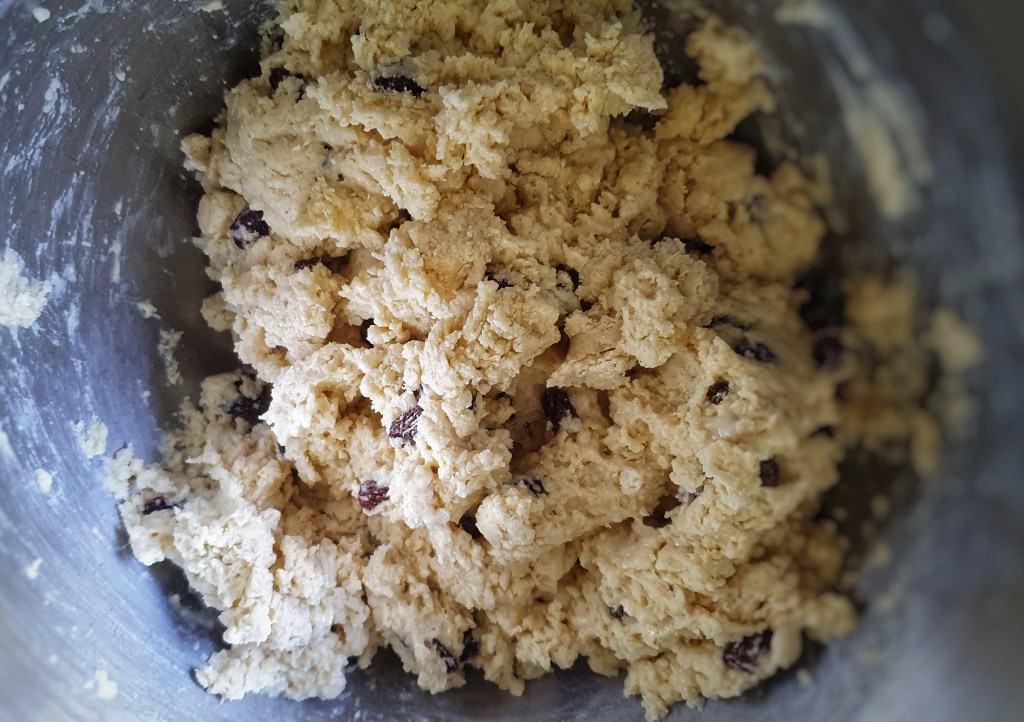

Keeping your worktop floured, roll out the dough to a thickness of 1.5 to 1.75 cm (a generous ½ inch), and cut out into rounds. I normally use a cutter of a diameter between 7 and 8 cm. It is important to take care when cutting: make sure you dunk your cutter in more flour and tap off excess before cutting. This is important because if there are splodges of sticky dough on the cutter, it will seal the edges of the scones, preventing a good rise. Also, don’t be tempted to twist your cutter, as this will have a similar effect. Arrange the cut-out scones on 2 lined baking sheets.

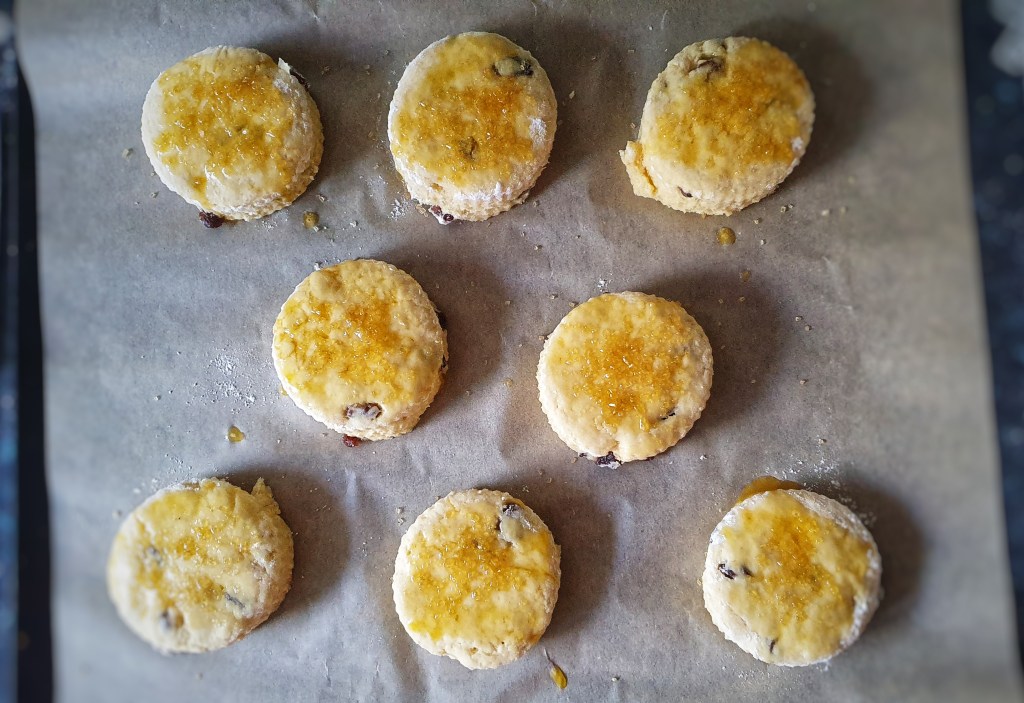
Bring the leftover dough together with your hands to form a cohesive dough without kneading it too much – we don’t want tough scones! Roll out again and cut out. Repeat until all of the mixture is used up.
Brush with egg wash being careful not to let any dribble down the sides – again, this will hamper the rising of the dough – then sprinkle with sugar. Bake for 15-20 minutes until golden brown and well risen. If there is uneven browning at the 10-minute mark, switch the trays around in the oven.
Cool on a rack.
Scones are best enjoyed on the day or the day after they are made. They do freeze well. Enliven them by popping them in the microwave for 10 to 20 seconds.
Eat with butter or clotted cream and jam.
Variations
Cranberry and Orange
Make as above, but add the zest of two oranges to the dry ingredients, and use dried cranberries instead of raisins or currants. Juice the oranges, pour into a measuring jug and top up with milk to 200ml/g.
Classic cheese scones
Use just 25 g caster sugar, and add 100 to 125 g grated Cheddar cheese once the flour has been rubbed in. If you like, you can add ½ teaspoon of dried herbs and a good pinch of Cayenne pepper. Use 230 g/ml of milk instead of 200 g/ml. Sprinkle some finely grated cheese (Parmesan is good) over the egg-washed scones before they go in the oven.
Walnut and Stilton scones
As above, but use 100-125 g grated Stilton and 80 g chopped walnuts


